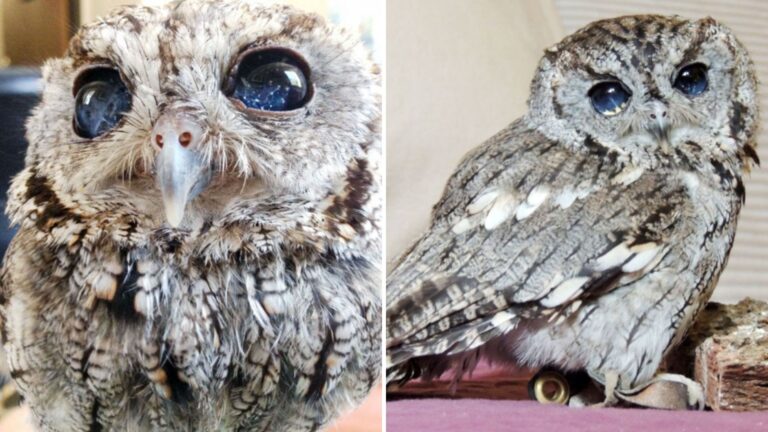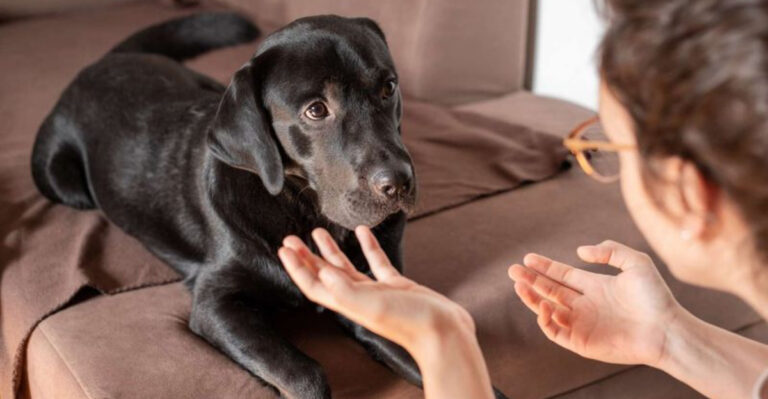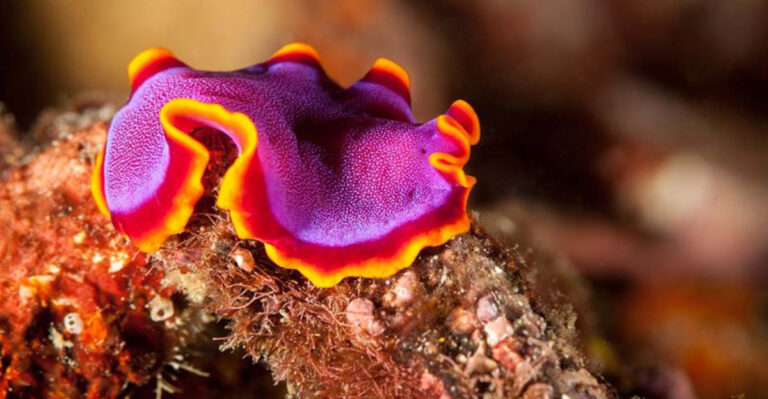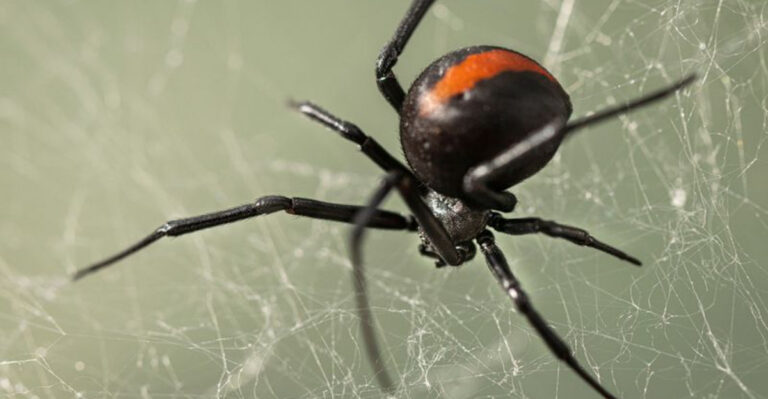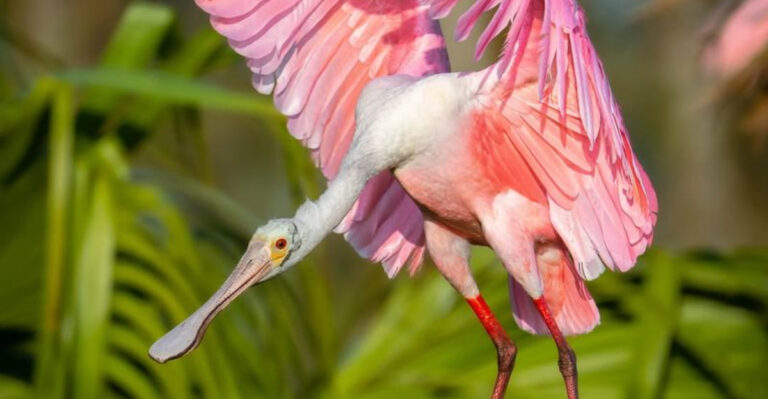15 Surprising Ways Cats Handle Stress Differently Than Dogs
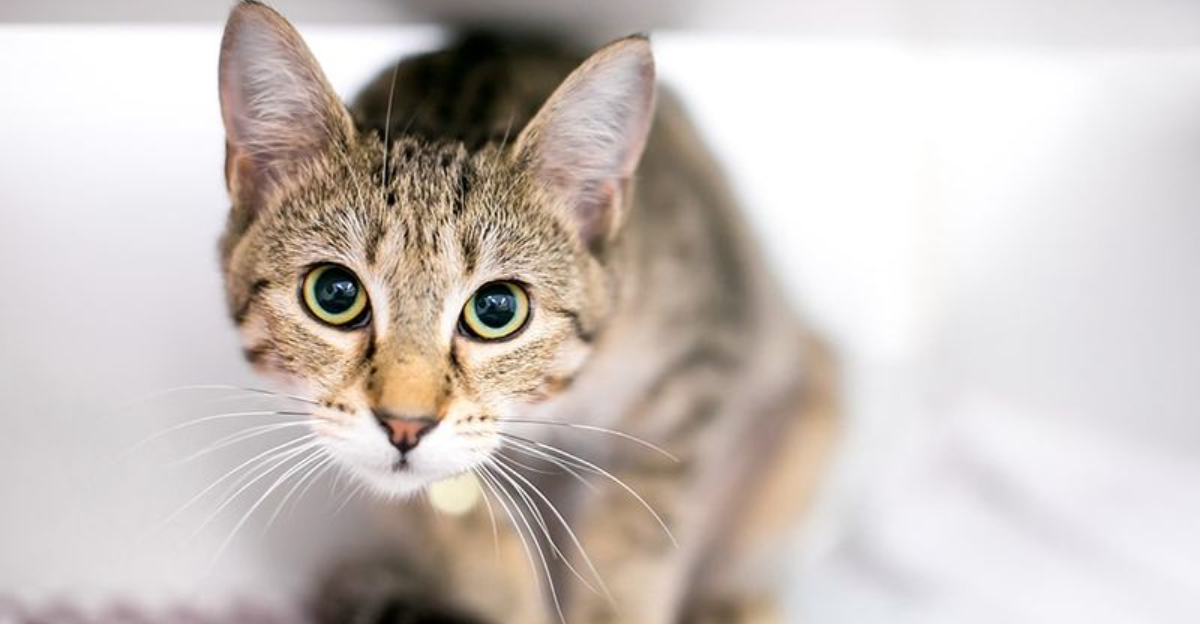
Ever noticed how your cat disappears during thunderstorms while your dog seeks comfort in your lap? Our feline and canine friends process anxiety in fascinatingly different ways.
Understanding these differences can help you better support your pets during stressful times and strengthen your bond with these amazing animals.
1. Hiding Vs. Seeking Comfort
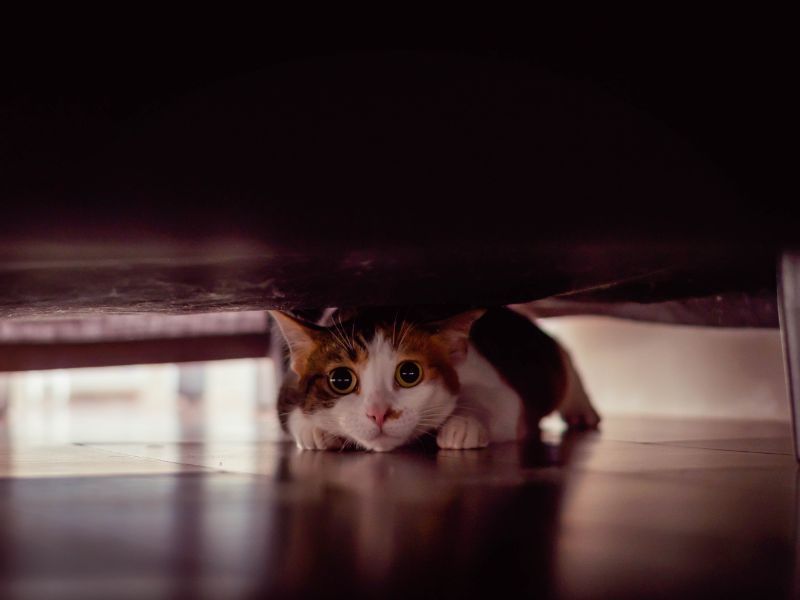
When thunder rolls, cats vanish under beds or into closets. Their instinct screams ‘find a safe hideaway’ rather than seeking reassurance from humans.
Dogs take the opposite approach, often gluing themselves to their owners’ sides. This fundamental difference stems from cats’ evolutionary history as solitary hunters versus dogs’ pack mentality.
2. Freeze Response Vs. Pacing
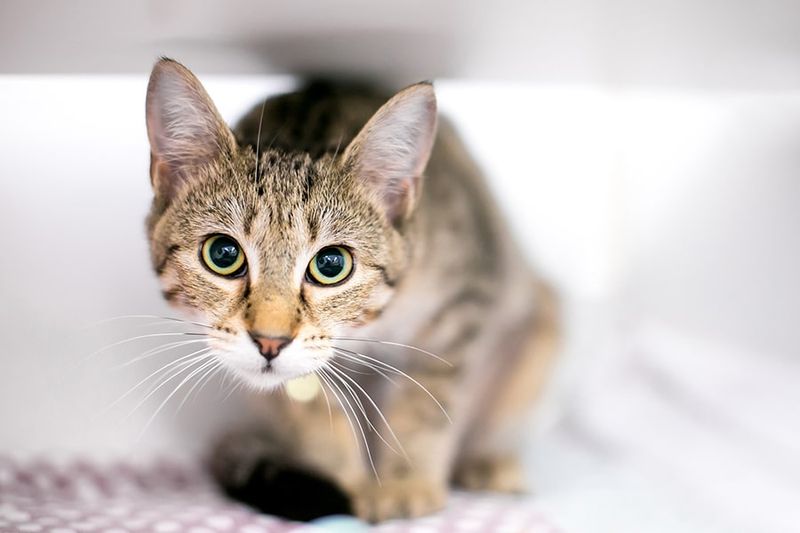
Faced with a threat, cats often become eerily still. This freeze response helps them assess danger and avoid detection from predators in the wild.
Meanwhile, anxious dogs pace restlessly, burning nervous energy through movement. Watch your dog’s circular path around the living room during fireworks compared to your cat’s statue-like stillness.
3. Grooming Intensifies
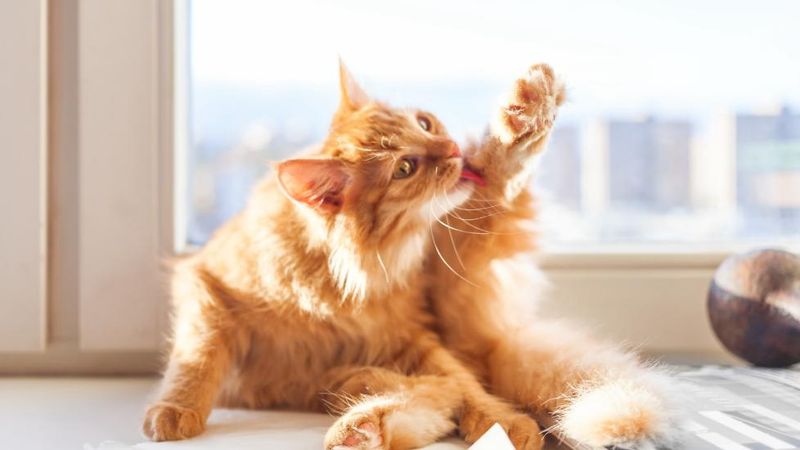
Stress transforms cats into obsessive groomers. This self-soothing behavior releases endorphins that calm their nervous system – nature’s feline anxiety medication.
Dogs rarely respond to stress with increased grooming. Instead, they might display destructive behaviors like chewing furniture or excessive barking as their outlet for anxiety.
4. Vertical Territory Escape

Stressed cats head for the heights! Perching on shelves or cat trees gives them a strategic advantage point and safety from ground-level threats.
Anxious dogs rarely seek higher ground during stress. Their wolf ancestors handled threats as a pack on the ground, explaining why your dog might hide under tables rather than on top of them.
5. Silent Suffering Vs. Vocal Complaints
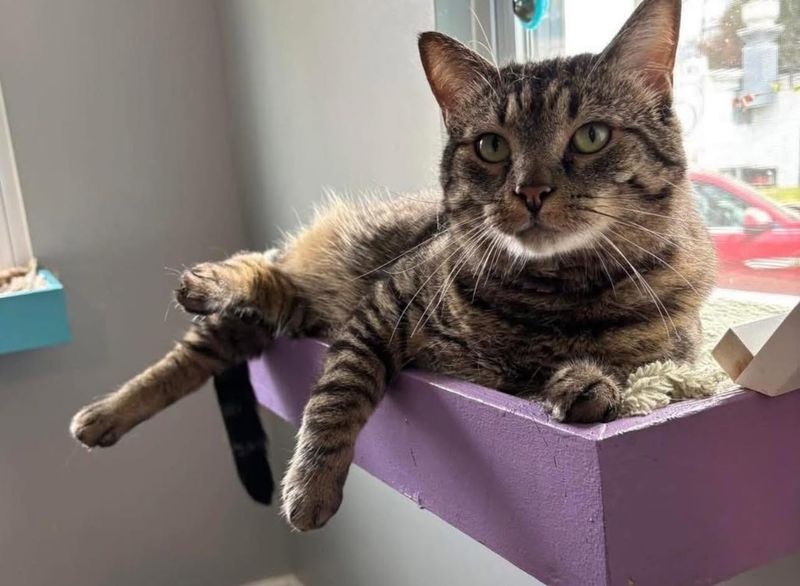
Mysterious silence often signals a cat in distress. Unlike their usual chatty selves, stressed cats become eerily quiet, masking vulnerability from potential predators.
Anxious dogs, however, broadcast their feelings loudly! Whining, barking, and howling serve as distress signals to their human pack members, essentially saying, “Help me, I’m scared!”
6. Appetite Changes Differ Dramatically
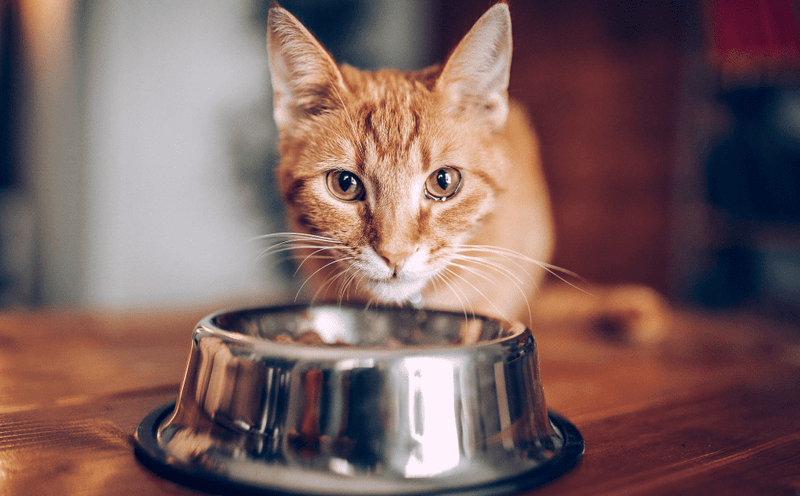
Stress turns many cats into hunger strikers. Their sensitive digestive systems shut down when anxiety rises, leading to concerning food refusal.
Dogs often swing in the opposite direction! Many anxious pups become vacuum cleaners, stress-eating anything in sight or begging for treats as comfort food. This difference highlights their distinct evolutionary coping mechanisms.
7. Litter Box Avoidance Vs. Indoor Accidents
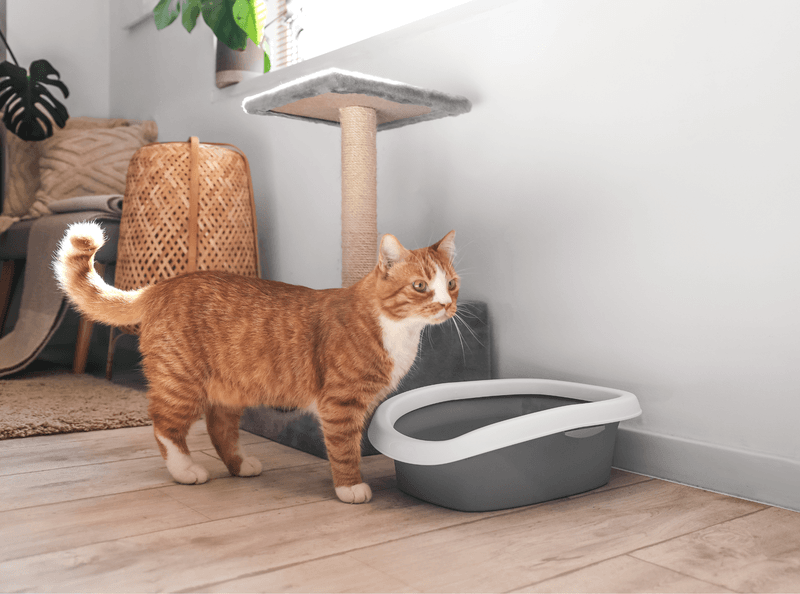
Bathroom habits reveal volumes about feline stress. Cats might suddenly avoid their litter box, instead choosing inappropriate spots that feel safer to them during anxious times.
Stressed dogs typically have a different problem – urgency and accidents. The nervous system stimulation triggers a “fight or flight” response that often includes immediate elimination, regardless of house training.
8. Aggression Signals Differ
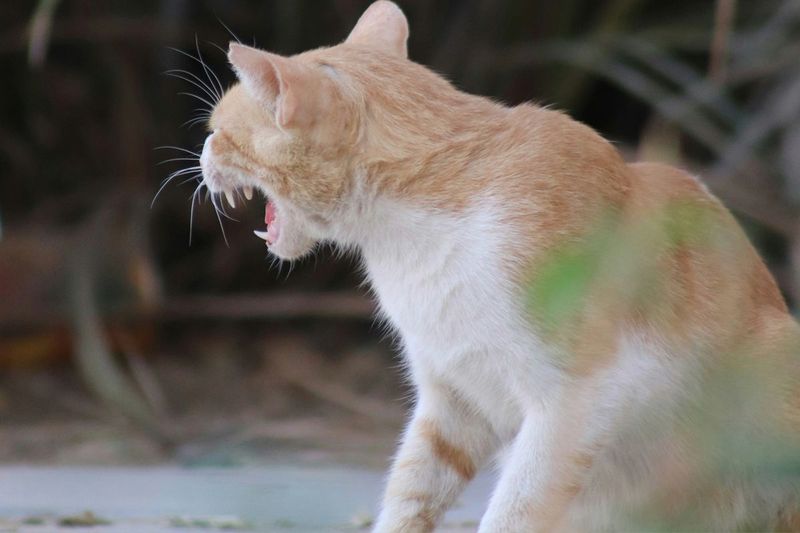
Dogs give clear warnings when stressed – raised hackles, bared teeth, or low growls, making their anxiety easy to spot.
Cats, however, are far more subtle, with twitching tails, flattened ears, and dilated pupils hinting at rising tension. That’s why feline aggression can seem sudden, appearing to come out of nowhere.
9. Sleep Pattern Disruptions
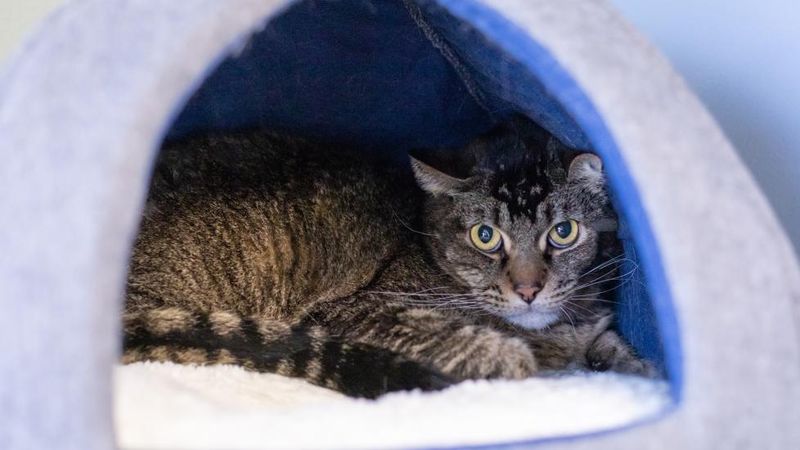
Hypervigilance plagues stressed cats. Instead of their typical 16-hour sleep marathons, anxious cats take brief catnaps with one eye seemingly open, constantly monitoring for threats.
Stressed dogs often experience the opposite problem – they might sleep more heavily as an escape mechanism. Your anxious dog might suddenly sleep through normally exciting events like the doorbell ringing.
10. Marking Behaviors Intensify
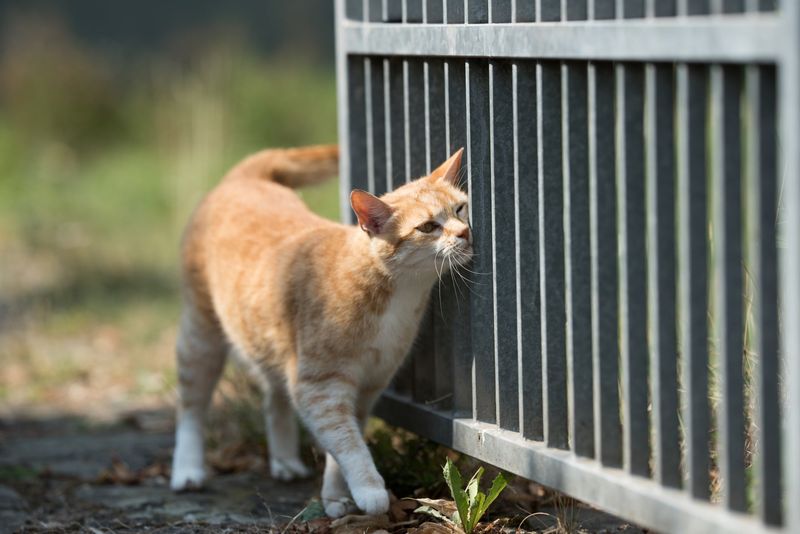
Stressed dogs rely on scent marking through urine, leaving their mark in multiple locations when anxiety strikes. Cats take a different approach, using cheek rubbing on furniture and other objects to spread their scent and claim territory.
Territorial marking skyrockets in insecure cats, with both facial pheromones and occasional urine marking reinforcing their sense of security.
11. Social Withdrawal Vs. Clingy Behavior
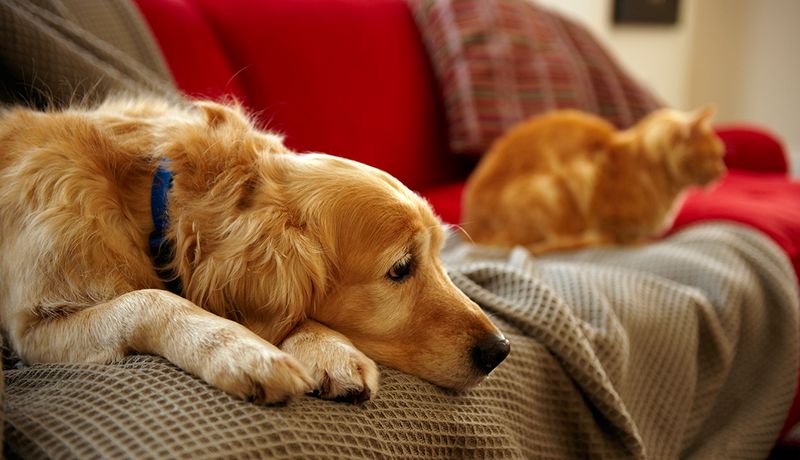
Unlike their canine counterparts, stressed cats become social ghosts. They’ll vanish for hours or days, avoiding all interaction until they feel safe again.
Anxious dogs transform into furry shadows, following their humans from room to room. This fundamental difference highlights cats’ solitary nature versus dogs’ pack mentality when handling stress.
12. Different Calming Pheromone Responses
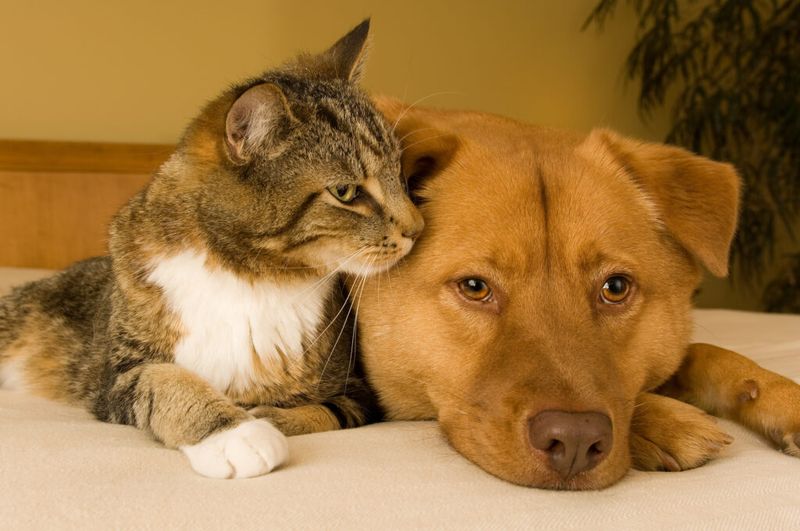
Calming signals work differently for cats and dogs. Dogs respond best to products mimicking appeasing pheromones from mother dogs, providing a sense of security.
For anxious cats, facial pheromones are the key – products that mimic these natural chemicals can transform feline behavior within minutes, a species-specific difference that highlights why calming solutions aren’t interchangeable.
13. Redirected Aggression Vs. Submissive Behavior
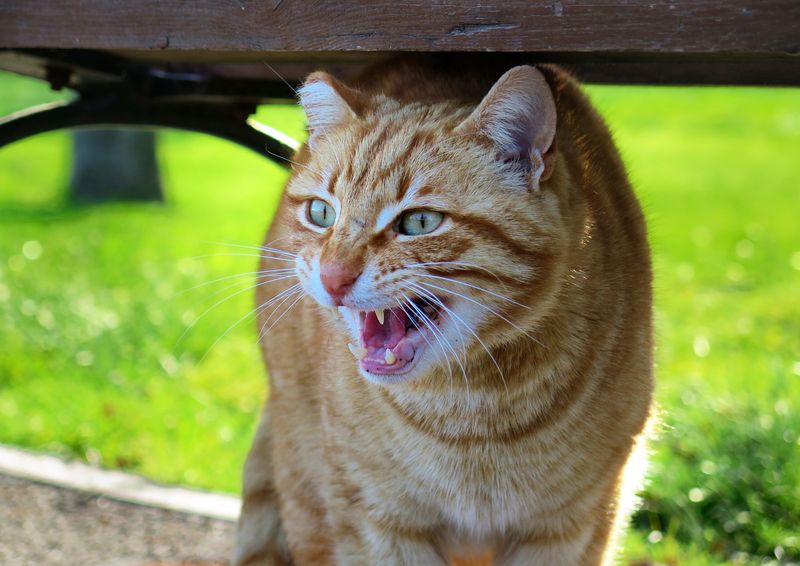
Witness a cat’s strange reaction when stressed by something outside their reach – they might attack the nearest cat, dog, or even human! This redirected aggression happens when they can’t address the actual threat.
Stressed dogs typically go the opposite direction, displaying submissive behaviors like belly exposure or lowered posture to defuse tension rather than redirecting it.
14. Recovery Time Variations
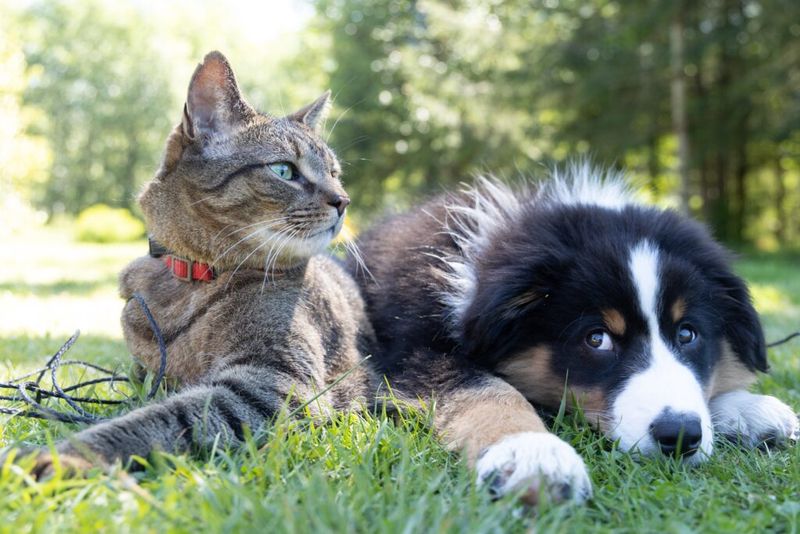
Cats hold stress grudges. After a frightening experience, they might remain on high alert for days or even weeks, suspicious that danger lurks around every corner.
Dogs typically bounce back faster, often returning to normal behavior within hours of a stressful event. This recovery difference explains why introducing changes to cats requires much more patience than with dogs.
15. Response To Enrichment During Stress
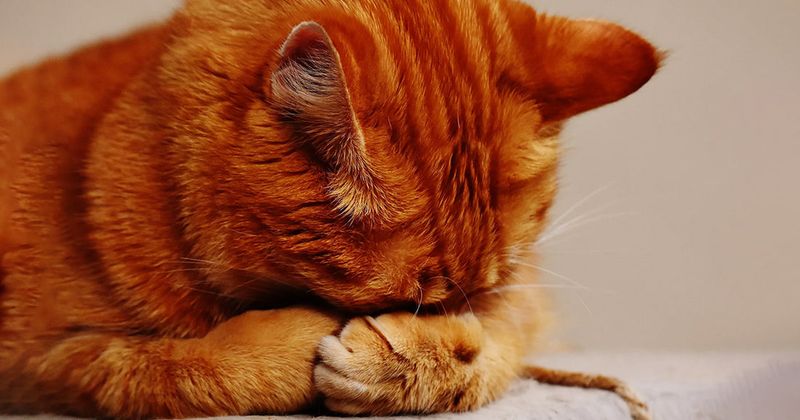
Puzzle toys become powerful stress relievers for anxious cats. The mental stimulation redirects their focus from worry to hunting instincts, naturally lowering stress hormones.
Stressed dogs often ignore enrichment toys completely. They typically prefer direct comfort through physical contact with their humans rather than distraction through play when anxiety strikes.


